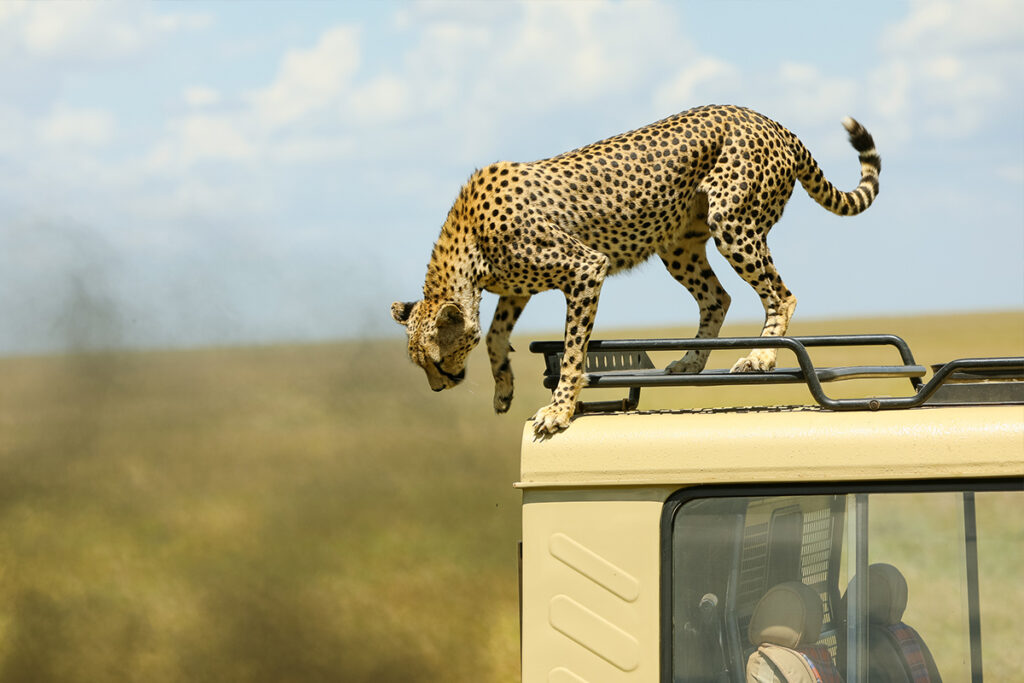Tanzania’s ecosystems are under serious strain as the effects of climate change ripple through its diverse landscapes. From savannahs to wetlands, each ecosystem plays a crucial role in maintaining the balance of nature, supporting a wide variety of plant and animal species. However, rising temperatures, unpredictable rainfall, and extreme weather events are pushing many species to the brink, altering habitats, and disrupting the natural order of wildlife.
In this article, we’ll explore how climate change is reshaping Tanzania’s ecosystems, the impact on its iconic wildlife, and the challenges faced by conservationists working to protect the region’s biodiversity.
How Climate Change Is Affecting Tanzanian Ecosystems
1. Rising Temperatures and Altered Rainfall Patterns
Over the past few decades, Tanzania has witnessed a steady rise in average temperatures. Warmer climates are linked to changes in ecosystem distribution and health, affecting plant growth, water availability, and animal behaviors.
Temperature Rise (°C) in Key Regions:
| Region | Average Temperature Rise (1990–2020) | Impact on Ecosystem |
|---|---|---|
| Northern Tanzania (Serengeti) | +1.2°C | Grassland depletion, droughts |
| Coastal Regions | +0.8°C | Coral reef bleaching, species loss |
| Southern Highlands | +1.0°C | Shifting plant zones |
Increased temperatures cause shifts in ecosystems’ geographical ranges, pushing some species to migrate to cooler areas, while others risk extinction.
2. Changing Ecosystems and Habitat Loss
Climate change is driving significant shifts in Tanzania’s ecosystems, with some habitats becoming unsuitable for the species inhabiting them:
- Savannahs and Grasslands: Prolonged droughts reduce grass growth, leading to food shortages for herbivores.
- Wetlands and River Systems: Reduced rainfall causes rivers like the Mara to experience lower water levels, impacting fish populations and dependent birds.
- Forests: Higher temperatures lead to increased forest fires, reducing cover and threatening species such as colobus monkeys.
| Ecosystem Type | Climate Change Impact | Affected Species |
|---|---|---|
| Savannah | Reduced water and food resources | Elephants, Lions, Antelopes |
| Wetlands | Lower water levels, increased salinity | Hippos, Migratory Birds |
| Coral Reefs | Ocean acidification, coral bleaching | Fish, Marine Invertebrates |
| Montane Forests | Shifting plant zones, loss of canopy cover | Colobus Monkeys, Birds |
3. Wildlife Adaptation and Behavioral Changes
As ecosystems shift, wildlife must adapt quickly. Many species are struggling to keep pace with these changes, altering migration patterns and behaviors:
- Wildebeest Migration: The Great Migration in Serengeti-Mara is increasingly unpredictable due to erratic rainfall, impacting survival rates.
- Bird Migration: Many bird species struggle to find food sources during migration due to changing blooming seasons and insect availability.
4. Increased Human-Wildlife Conflict
With shrinking habitats, wildlife is increasingly encroaching on human settlements in search of food and water. This is particularly true for large mammals like elephants, which migrate longer distances due to food shortages. Such movements lead to increased conflicts, crop destruction, and sometimes fatal confrontations.
Case Study: Impact on the Serengeti-Mara Ecosystem
The Serengeti-Mara ecosystem hosts the famous Great Migration but faces severe threats due to climate change. Here’s a snapshot of the changes:
| Aspect | Before Climate Change | Current Scenario |
|---|---|---|
| Migration Pattern | Predictable seasonal movement based on rainfall | Unpredictable, longer drought periods |
| Water Availability | Ample water during migration seasons | Rivers drying up earlier |
| Calf Survival Rate | High due to consistent food resources | Lower rates due to food shortages |
| Predator-Prey Balance | Stable predator-prey dynamics | Disrupted due to delayed prey movements |
Conservation Efforts and Strategies
Despite these challenges, several strategies are being implemented to protect Tanzania’s ecosystems and wildlife:
1. Habitat Restoration Projects
Organizations are working to restore degraded habitats through reforestation and wetland rehabilitation projects. These efforts are critical for rebuilding ecosystems that serve as water sources and breeding grounds for wildlife.
2. Community-Based Conservation
Local communities are integral to conservation. Initiatives provide alternative livelihoods for those living near protected areas, reducing human-wildlife conflict and promoting sustainable land use.
3. Wildlife Corridors
Creating wildlife corridors that connect fragmented habitats allows species to migrate safely, access new food and water sources, and adapt to changing conditions.
4. Climate-Resilient Strategies
Adaptive management strategies, such as artificial water sources during droughts and rapid-response interventions, help conserve species facing immediate threats.
Future Outlook: What’s Next for Tanzania’s Ecosystems?
If current trends continue, Tanzania’s ecosystems may face more severe changes in the coming decades. However, adopting climate-smart conservation strategies and increasing global awareness could help preserve the country’s biodiversity. Addressing the root causes of climate change while supporting local communities will be key to maintaining the health of Tanzania’s ecosystems.
FAQs
1. How is climate change affecting Tanzania’s national parks?
Climate change is altering habitats, affecting species distribution, and disrupting the availability of resources like water and food.
2. What specific species are most at risk in Tanzania due to climate change?
Elephants, lions, migratory birds, and coral reef species are among the most vulnerable due to habitat changes and resource shortages.
3. What are conservationists doing to mitigate these changes?
Conservationists are focusing on habitat restoration, creating wildlife corridors, and implementing community-based strategies to reduce human-wildlife conflict.
4. What role do local communities play in conservation?
Local communities are critical to conservation success. Engaging them in sustainable practices, offering education, and providing alternative livelihoods are key strategies for long-term success.
Final Thoughts
Tanzania’s ecosystems are undergoing rapid changes as a result of climate change, posing significant threats to wildlife and habitats. With proactive conservation efforts and adaptive strategies, there’s hope for preserving the country’s unique biodiversity. By understanding these impacts and supporting ongoing efforts, we can ensure that future generations continue to experience Tanzania’s incredible wildlife and rich natural heritage.



